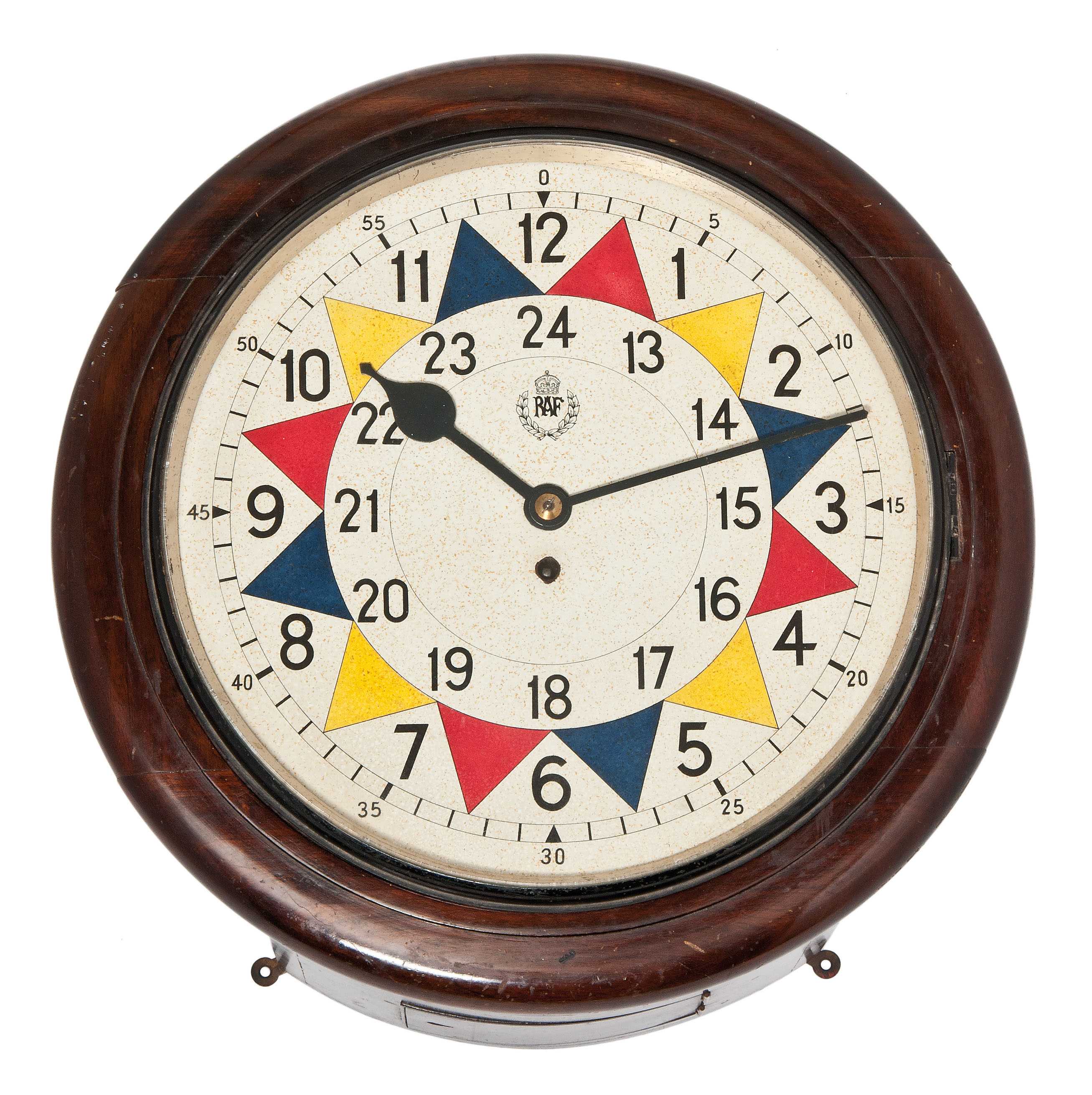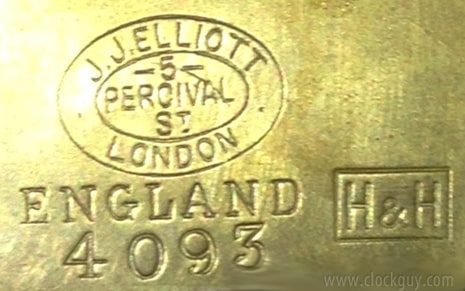 F. W. Elliott of London clocks range from the timepiece Elliott clocks, through strike Elliott clocks to full Westminster and Whittington chiming Elliott clocks. Each Elliott clock has been hand made to a high specification and has an eight-day mechanical movement, making them one of the best clocks in the world.
F. W. Elliott of London clocks range from the timepiece Elliott clocks, through strike Elliott clocks to full Westminster and Whittington chiming Elliott clocks. Each Elliott clock has been hand made to a high specification and has an eight-day mechanical movement, making them one of the best clocks in the world.The name of Elliott has been synonymous with quality clocks for well over over 100 years. The original Elliott company was formed by James Jones Elliott in 1886. James Jones Elliott died in 1904 and the company merged with Grimshaw & Baxter in 1909. The partnership was dissolved in 1921 when J.J. Elliott's son Frank Westcombe Elliott left the company and joined Gillett & Johnson. Two years later in 1923 he formed his own company F. W. Elliott Ltd, having taken over the domestic clock manufacturing part of Gillett & Johnson who continued to make turret clocks.
Timeline
1865
James Jones Elliott of 156 Cheapside in the City of London, was apprenticed to "Bateman" of 82 St John Street, Smithfield, London to learn the art of clock making. It was not obvious at the time, but this was to be the origin of a company that would achieve a worldwide reputation as a manufacturer of the fine quality Elliott of London clock. Initially J.J. Elliottspecialized initially in producing pinions and balance shafts, progressing to making and patenting, a weight driven movement that had chimes on tubes. The success of this original Elliott clock resulted in considerable trade with America.
James Jones Elliott's son, Frank Westcombe Elliott, entered the retail trade at the age of 17. It was at this time that his father bought a partnership with a jeweller called Walden of Brompton Road, London.

J.J. Elliott Bell/Gong Tallcase Clock Movement
1904
James Jones Elliott died and his son Frank Westcombe Elliott succeeded him to run the clock making business.
1909
The clockmaker company of J. J. Elliott amalgamated with Grimshaw & Baxter, forming Grimshaw, Baxter & J. J. Elliott. They were a watch making company that was apparently in business from 1909 to 1921, during which time a number of models and styles of clocks and watches were manufactured. It appears the firm Grimshaw & Baxter, which continued after the dissolution of Grimshaw, Baxter & J J Elliott in 1921, continued to use the full name of Grimshaw, Baxter & J.J. Elliott up to at least 1958.
Grimshaw and Baxter were described in 1879 as watch tool makers. They also Made small hand-operated metal planing machines and were the makers of the 'Improved Equivalents Micrometer', Patent 20028. This was similar to a modern 0 - 1 inch micrometer, but with the addition of a large dial whose internal movement was driven by the thimble. The dial had a number of windows which allowed direct readings of decimal inches, millimetres, SWG, Stubs Wire Gauge, fractional inches, and B.A. tapping sizes. These functions were only available in the range 0 to 0.300 inches.

Grimshaw Improved Equivalents Micrometer
1911
The factory moved to Grays Inn Lane, London.
1917
The factory moved to larger premises in St Anns Road, Tottenham, London.
1921
The partnership with Grimshaw & Baxter was dissolved. Frank Westcombe Elliott left the company and joined a well-known firm of Bell Founders and Clockmakers, Gillett & Johnston Ltd, in Croydon.
1922
Listed Exhibitor, Grandfather and Bracket Clocks (chiming on Tubes, Bells and Gongs) Strikes and Timepieces, Railway and Dial Clocks, Ships' Levers: also Watches
1923
Frank Westcombe Elliott took over the Gillett & Johnston clock factory and formed the famous company of F.W. Elliott. His two sons, Leonard Elliott and Horace Elliott, who had served their apprenticeships in the trade, joined him.
1929
Frank Westcombe's third son Ronald Elliott, joined the company. They were a listed Exhibitor at the British Industries Fair as, Manufacturers of Clocks, including Clock Cases and Clock Movements for all purposes specially made for export to all parts of the world. Clocks in lacquer and fancy woods, with Chimes. Reproductions.
1939
Elliott'sstarted to produce clocks for the armed forces when war was declared in 1939, together with test gear and apparatus for the Rolls Royce engines used in the RAF planes.
1943
Incendiary bombs hit the factory during 1943 on two occasions but production was not seriously affected.
1944
Frank Elliott died at the age of 69 and his son Horace Elliott assumed the role of Managing Director, whilst Leonard controlled sales from a showroom in Hatton Garden.
1947
Listed as Exhibitor at the British Industries Fair as Manufacturers of Fine Quality Clocks, Bracket Chiming and Striking Clocks, Eight-day Lever Timepieces, Wall Clocks. Antique Reproductions a speciality.
1952
Horace Elliott was elected Chairman of the British Horological Institute in the same year as Tony, one of Horace's sons, joined the company after training in cabinet making. He was appointed manager of the cabinet shop in 1967.
1966
Ronald Elliott died suddenly, at the age of 54, his son Peter had joined the company in January of the same year, having been trained as an engineer at Vickers Instruments Ltd.
Ronald Elliott died suddenly in 1966, at the age of 54, his son Peter had joined the company in January of the same year, having been trained as an engineer at Vickers Instruments Ltd.
1969
Peter Elliott was appointed as a Director.
1998
F.W. Elliott Ltd ceased trading in 1998.
Showroom: 105 Hatton Garden, London, EC1
Factory: Union Road, West Croydon.

"H&H" is Harris & Harington, the tubular chime maker/Elliott partner
Elliot movements were also sold by numerous American companies and installed in both British and American made cases including Walter H. Durfee, Herschede, R.J. Horner and many more.
